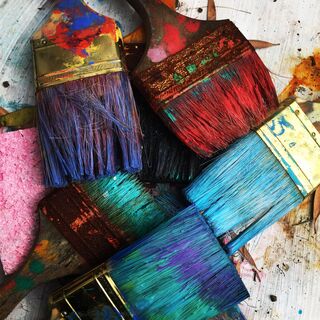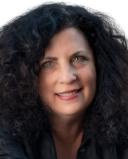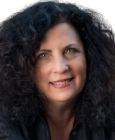Creativity
The Importance of Creativity
Personal Perspective: Creative pursuits enhance work/life balance and bring joy.
Posted October 1, 2022 Reviewed by Gary Drevitch
Key points
- Acts of creativity add meaning, shape, purpose, and richness to our days.
- Educators, particularly in higher education, face institutional demands that often constrain creativity.
- A commitment to creativity can enhance work/life balance.

What is creativity? It’s usually defined in terms of imagination and innovation and especially related to the production of artwork. Yet creativity isn’t necessarily about art per se but is a quality of being artful. It’s about how we make and weave meaning and richness into our days. Being creative means possessing curiosity, the ability to observe keenly, and a passion for innovation to move about in space and time in new ways. It means trying something different, which requires us to take the leap to trust our intuition so we can play in the unknown.
In academe, we need to teach and write in ways that reveal a depth of interpretation, that demonstrate meaning-making, that forge connections, that push the boundaries of existing modes of thought, and that play with new questions and ideas. When it comes to teaching, we might create a new course that invigorates us as teachers. Such new preparations breathe new energy into teaching and keep us engaged as lifelong learners, an important thing to model for students. Recently, I’ve created three new courses for our sociology curriculum and each was transformative for my teaching and writing practice.
It’s paradoxical that in higher education many faculty members often report feeling stifled or deadened when it comes to creative practices. One would think academe would be one of the more open arenas for nurturing creativity. But, formulaic and status-quo constructions generally prevail for what makes scholarship and pedagogy good enough for us to achieve successful annual reviews and ascend the ranks through tenure and promotion.
It saddens me tremendously to hear so many in academe, including several of my important mentors, confess that they can’t wait to retire just to finally write the sort of stuff they want to write. Living and working suspended like that is so conditional and constraining; it functions like a chokehold on our inner creative life. I couldn’t bear to wait that long.
I’ve come to regard the reclamation of my own creativity as a radical act. It’s a way of being more present in my life and work and responding to the urgent and important inner whispers that insist I be more creative today—not decades from now in retirement.
I’ve found the best way to anchor more deeply into that mindset is to borrow energy and momentum from another arena of invention. When I attend concerts, I think about the habits, routines, and practices of the musicians. And I’m always energized to hear about others’ seemingly mundane daily rituals that pave the way for creativity. Witnessing others’ creativity can jump-start our own.
Over the past two years since my mother died, I’ve been unpacking boxes of her paintings. I’ve been blown away by how vast a body of work she produced and inspired by how she kept at it, constantly taking new risks and trying again. In the mornings, after having espresso, I’ve found myself going into the guest room, now turned art gallery, and caressing the nuanced details of some of the pieces. Sometimes I take photographs of them that I pair with fresh flowers or with the work of a favorite potter—playing with colors, shape, light, and form—and then share them on social media.
Invariably, people ask if my mother and the potter created work in tandem because of how much their art complements each other. I explain that, no, in fact, I just noticed the parallels and decided to photograph them together. It’s in the act of making such visual connections and juxtapositions that I feel a high of creative and playful synthesis, and I find that it propels me to want to sit down to do my own writing.
Creativity involves imagining new ways of seeing, sensing and being. Another simple way I do that is to look around a room in my home and find an object, meditate for a moment on its functions and then consider what else it might be used for. The simple act of repurposing an object changes my relationship to it and keeps things fresh. When I get stuck, I try to pause and reflect on times I felt most in a creative flow state, and I call up a multisensory picture of that experience to revisit it for the qualities I most need to tap into.
While we grapple with intense institutional demands and constraints, it’s still possible to craft a creative dossier. For those of us committed to being creative public intellectuals, the issue becomes one of educating colleagues about what we’re doing and why it’s important. At my university, where I work in a multidisciplinary department of social sciences and humanities and where faculty members from disciplines all across the university comprise the tenure and promotion committee, I crafted a personal statement for my file that captured my intentionality around public sociology and the ways it’s a legitimate and firmly grounded part of my discipline.
We’ve seen how the pandemic has changed how people conceptualize work, space, and place, and we can use that to creatively rethink how we manage our time for tasks such as office hours. It might be possible to conduct them outside, or to do a walk-and-talk session with a student on campus. Or perhaps we can offer phone appointments while walking. The spirit of these ideas isn’t to amplify multitasking, but rather to consider ways we might be able to give back to ourselves while supporting others’ success and growth. The point isn’t about adding more but about how we negotiate our time in ways that prioritize creative spaciousness.
Similarly, much of the service being done across campuses is unpaid labor for the purpose of institutional maintenance. We might want to create our own service opportunities. Years back, a colleague and I created monthly events related to gender issues and invited the entire campus community. No such thing had existed there before, and various campus leaders appropriately recognized that endeavor as a meaningful and special contribution of service.
We’re limited by blocking beliefs that if only we could have endlessly unfolding hours and days, we would finally be able to write and publish more—that until it’s perfect, we dare not submit our work yet, and that we probably don’t know what we’re doing anyway, given the impostor syndrome so pervasive in academe. But that mentality of “if only,” “when” and “not until” ramps up our self-expectations and fear and holds us back from taking creative risks. It also feeds into a mentality of scarcity that runs counter to a creative life.
We must make room for our creative endeavors by prioritizing them and not becoming overwhelmed or sidetracked by other demands. I’ve learned that if our initial gut instinct is to say no to something, it’s best to say it or to say, “I’ll have to think about it and get back to you,” and then return with the no. Some colleagues bear down in meetings with intense praise and pressure to get us to agree to something. It’s OK to say, “Thanks for thinking I’d be good at this, but if you need an answer right now, it will have to be no.” In my mind, I picture the famous New Yorker cartoon where a man on the phone looks at his calendar and says, “How about never—is never good for you?”
Our personal lives offer us endless opportunities to be creative. In The Artist’s Way, Julia Cameron suggests daily walks, writing morning pages every day, and taking a creative excursion as regularly as possible. Contained in that model is the need for rituals and structure to be creative. I’d add that being in friendships and intimate relationships that nourish our creativity is essential.
It’s advantageous to approach our responsibilities as creatively as possible, as doing so will enhance work-life balance. When we drop down into the most creative oasis within ourselves, we’re able to experience unleashed freedom, timelessness, flow, and energy in ways that life looks light-filled, colorful, and more spacious than ever before.
An earlier version of this article appeared in Inside Higher Ed on September 23, 2022.




